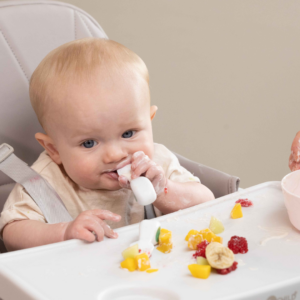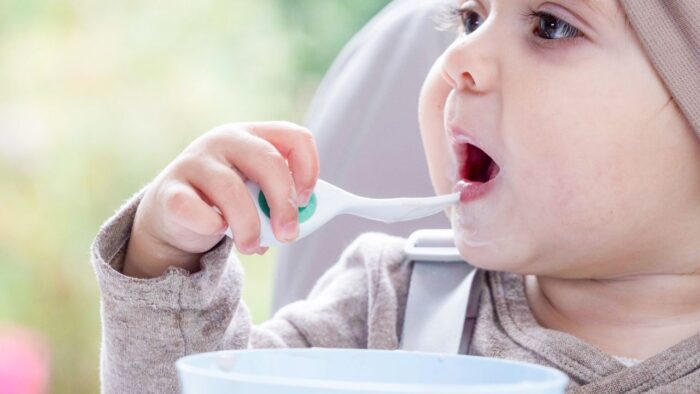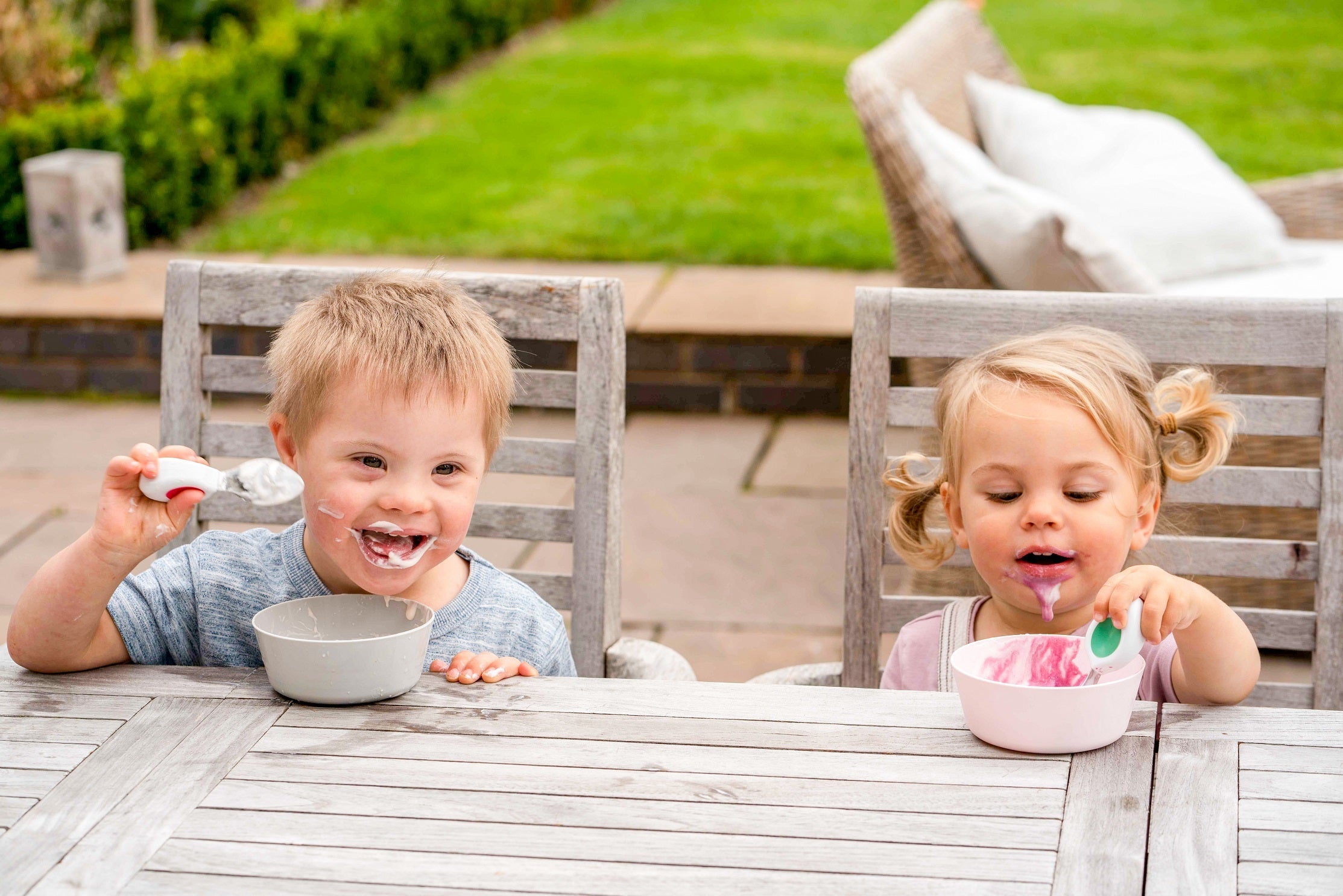Introducing baby spoons can feel daunting for parents, but it's a necessary step in independent eating.
Stacey Zimmels is doddl‘s expert partner. With more than 20 years experience as a feeding and swallowing specialist speech therapist supporting families with feeding challenges, here are her top 4 tips to encourage spoon feeding during weaning. "Starting solids is an exciting and sometimes daunting time! Many of us do our research and consider which method is right for us/our baby. Spoon feeding? Baby led weaning? Spoon and finger foods? We decide and off we go…. However sometimes your little one may have a different idea. Lots of parents choose to spoon feed their babies, but it soon becomes apparent that they want to feed themselves, so finger foods it is. Here are some tips on helping your little one take spoon fed foods during weaning:
Tip 1 - Role model
Your baby naturally wants to have what you have, and do what you do. Sit with your baby and eat the same food as them using a baby spoon or simple metal teaspoon. Give the same to your baby. Don’t try and feed your little one, instead feed yourself and be responsive to any requests your baby makes to grab your spoon or eat your food. The more that you do this the more likely your little one is to engage with you and your food/cutlery. And the more they feed themselves and eat softer/wetter foods the more likely they are to continue.
Tip 2 - Use finger foods to dip
If your baby can pick up a finger food and take it to their mouth and eat, then try using a finger food as a dipper. Examples include:
- a stick of pear and plain yoghurt,
- bread stick and puree or
- rice cake and hummus.
Role model and show your little one how to do it. To make it easier you can stick the finger foods into the dips for them just to pick out and eat with the coating. Both loading the finger food with soft foods and allowing them to dip it in, mimic the acts of picking up a spoon and feeding themselves with it. They get the added benefits of eating the softer wetter foods as they practice.
Tip 3 - Load the spoon
If your baby won’t take a spoon from you, then think about supporting them to feed themselves with a spoon. At the start of eating solids, they don’t have the developmental skills to be proficient at picking up a spoon and scooping themselves. If you load up the spoon for them and then place it in front of them, they only have half the job to do – pick up the spoon and take it to their mouth. This takes me to tip 4…
Tip 4 - Make it easy!
Make self feeding with a spoon as easy as possible for your baby, so that they have success! The more straightforward the task, the more likely they are to repeat it. Select a spoon which is designed with a fat handle which your baby can easily grip. Go for a short handle which makes the action of picking up the spoon and taking it to their mouth easier, with reduced likelihood of spilling. doddl baby cutlery is ergonomically designed and meets both of these criteria. There is no right or wrong method to use to wean your baby and it is always best to follow their lead. However you may have reasons why even though your little one is going for finger foods, you want them to take food from a spoon too. Mix and match the tips above to help with spoon acceptance."  We hope you've enjoyed these top 4 tips to encourage spoon feeding during weaning and found them useful. For more helpful weaning advice and resources, check out our parenting tips and advice. Find out more about doddl baby and child mealtime products.
We hope you've enjoyed these top 4 tips to encourage spoon feeding during weaning and found them useful. For more helpful weaning advice and resources, check out our parenting tips and advice. Find out more about doddl baby and child mealtime products.
Our range of doddl baby cutlery, suitable for 6 months+ is perfect for introducing cutlery to your little one. The fork and spoon have smooth ends which feel comfortable in your baby's mouth and the short handles encourage the correct grip. The children's cutlery is suitable for 12 months+ and includes a fork, spoon and knife. The short, smooth handles encourage the correct finger placement, developing dexterity, coordination and control. This makes it easy to transition to adult cutlery as and when they are ready.




Leave a comment
This site is protected by hCaptcha and the hCaptcha Privacy Policy and Terms of Service apply.